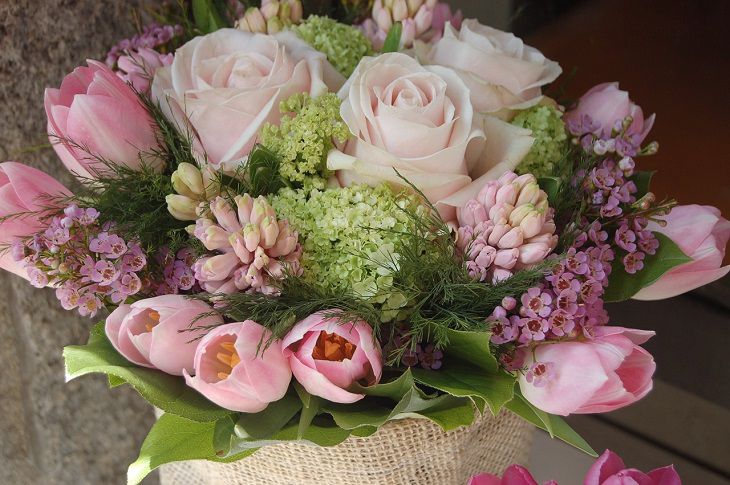Benefits of floral compositions: When nature helps you
Many gardeners grow flowers not just because they're pretty - they can also affect their mood and mental health a lot.
Walking through a flower garden, or looking at pretty floral compositions can help your mental health and emotional stability.
Here are a few benefits that your garden flowers can have on you.
Fragrance Therapy
Many flowers have pleasant scents that can positively affect your mental well-being.
Breathing in the natural fragrances of flowers can trigger the release of feel-good chemicals in your brain, promoting relaxation and reducing stress.

Aromatic flowers like lavender, jasmine, or roses are particularly known for their calming effects.
Biophilia Connection
Humans have an innate connection to nature, known as biophilia.
Having flowers in your environment, whether indoors or outdoors, can bring a touch of nature into your space.
This connection to the natural world has been shown to reduce stress, increase feelings of happiness, and improve overall mental health.
Mindfulness and Presence
Taking the time to arrange or simply appreciate a bouquet of flowers encourages mindfulness—being present in the moment.
This practice can help reduce anxiety and stress by redirecting your focus to the beauty of the flowers and away from daily worries.
Symbolism and Sentiment
Flowers often carry symbolic meanings or sentimental value.
Receiving a bouquet on a special occasion or keeping flowers with personal significance can create positive associations and enhance your emotional well-being.
Seasonal Variations
Different flowers bloom in different seasons, and their presence can reflect the changing seasons.
Seasonal variations in flower compositions can bring a sense of novelty and anticipation, adding variety to your environment and influencing your mood accordingly.
